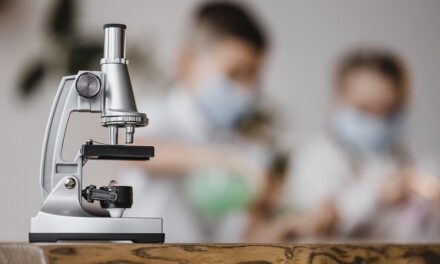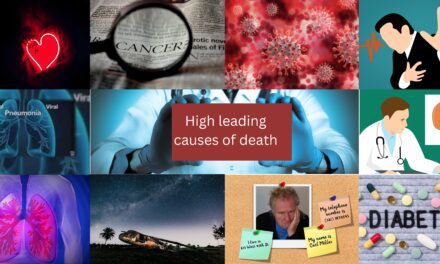Introduction of Anemia vs Iron Deficiency
Anemia vs Iron Deficiency are often thrown around like interchangeable terms. But they’re not the same thing. It’s kind of like calling all headaches migraines close, but not quite. While iron deficiency can lead to anemia, not all anemia stems from low iron. And confusing the two can delay proper treatment, which might make things worse over time.
So why is it so important to understand the real difference? Because knowing what’s going on in your body gives you the power to do something about it. Whether you’re someone who’s always tired or you’ve just seen some weird results on a blood test, this guide is here to help clear things up.
Both anemia vs iron deficiency can share symptoms—think fatigue, pale skin, and dizziness. But their causes and treatments can be worlds apart. We’ll break everything down in plain language, compare the two side-by-side, and debunk a few myths along the way. If you’ve ever wondered what’s really draining your energy or making you feel “off,” you’re in the right place. Let’s get into it.
What is Anemia?
Anemia isn’t just “feeling tired.” It’s a medical condition where your body doesn’t have enough healthy red blood cells to carry oxygen to your tissues. Oxygen = energy. So if your red blood cells are slacking, you’re going to feel it.
Types of Anemia
Anemia comes in several flavors—iron deficiency anemia is just one.
Iron Deficiency Anemia: The most common type. Caused by—you guessed it—a lack of iron.
Vitamin Deficiency Anemia: Low folate or B12 can also mess with red blood cell production.
Hemolytic Anemia: Your body destroys red blood cells faster than it can make them.
Aplastic Anemia: Your body just stops making enough blood cells altogether.
Each of these types affects your body differently. While iron-deficiency anemia is linked directly to iron levels, others may be due to autoimmune diseases, chronic conditions, or even genetics.
Causes of Anemia
The root causes of anemia vary depending on the type, but they typically fall into three broad categories:
Blood Loss: This can come from heavy periods, gastrointestinal bleeding, surgery, or trauma. When you lose blood, you lose red blood cells, and that can quickly lead to anemia.
Decreased or Faulty Red Blood Cell Production: Conditions like vitamin deficiencies, bone marrow disorders, or chronic diseases (like kidney disease) can hinder red blood cell production.
Increased Red Blood Cell Destruction: In some cases, the body starts destroying red blood cells too quickly, which is what happens in hemolytic anemia.
Certain medications, infections, or autoimmune diseases can also trigger anemia. The key takeaway? Anemia isn’t a disease itself—it’s a symptom of something bigger going on.
Symptoms of Anemia
If you’ve ever felt like a walking zombie even after a full night’s sleep, anemia might be the culprit. The symptoms can be subtle at first but become more noticeable over time:
Fatigue (big time)
Pale or yellowish skin
Dizziness or lightheadedness
Shortness of breath
Cold hands and feet
Irregular heartbeat
What is Iron Deficiency?
Iron deficiency means your body is running low on iron, a mineral it desperately needs. It’s not a disease by itself, but it can cause problems—like anemia—if it gets too severe.
There are stages to iron deficiency:
Iron Depletion – Your iron stores are low, but blood levels are still okay.
Iron-Deficient Erythropoiesis – Less iron is available for red blood cell production.
Iron-Deficiency Anemia – Hemoglobin drops, and symptoms kick in.
Spotting iron deficiency early is the key to stopping it from turning into full-blown anemia.
Causes of Iron Deficiency
Iron deficiency can happen for a bunch of reasons. Some of the most common include:
Not Enough Iron in the Diet: Vegans and vegetarians can struggle with this, especially if they’re not careful about getting iron-rich foods.
Blood Loss: Whether from menstruation, internal bleeding, or frequent blood donations, losing blood means losing iron.
Poor Absorption: Conditions like celiac disease, Crohn’s disease, or gastric bypass surgery can interfere with how your body absorbs iron.
Increased Need: Pregnant women or growing children need more iron than usual.
Sometimes the cause is obvious, but other times, it’s buried under layers of medical issues or lifestyle habits. That’s why testing is so crucial.
Symptoms of Iron Deficiency
Constant tiredness and low energy
Weakness
Pale skin or dark circles under your eyes
Headaches and dizziness
Cold hands and feet
Brittle nails or hair loss
Strange cravings for non-food items like ice, dirt, or chalk (a condition known as pica)
Comparing Anemia vs Iron Deficiency
| Aspect | Iron Deficiency | Anemia |
| Definition | Lack of sufficient iron | Low red blood cell count or hemoglobin |
| Cause | Usually poor diet, blood loss, absorption issues | Various – iron deficiency, chronic disease, vitamin deficiencies, etc. |
| Symptoms | May be subtle or non-existent early on | Fatigue, weakness, shortness of breath, pale skin |
| Diagnosis | Low ferritin, low serum iron | Low hemoglobin and hematocrit |
| Treatment | Iron supplementation, dietary changes | Depends on type – could be iron, B12, folate, or other medical intervention |
How Iron Deficiency Leads to Anemia
Step-by-Step Breakdown
- Iron levels drop.
- Hemoglobin production slows.
- Red blood cells become fewer and weaker.
- Boom—oxygen delivery tanks.
- You feel like a zombie.
Diagnosing Anemia vs Diagnosing Iron Deficiency
Blood Tests
- Hemoglobin Test: Low levels = anemia
- Hematocrit Test: Measures percentage of red blood cells
Iron Studies
- Serum Iron
- Ferritin (iron storage)
- TIBC (Total Iron-Binding Capacity)
Interpreting Results
Your doctor will look at the full picture to figure out whether you’re just low on iron or full-blown anemic.
Treatments for Anemia and Iron Deficiency
Iron Supplements
These are the go-to fix. But take them with vitamin C for better absorption—and beware of constipation!
Dietary Changes
- More red meat, beans, spinach, and fortified cereals
- Less coffee/tea with meals (they block iron)
Treating Underlying Causes
If a bleeding ulcer or celiac disease is to blame, iron pills alone won’t cut it.
Foods That Help Fight Iron Deficiency and Anemia
Heme vs. Non-Heme Iron Sources
- Heme Iron (easily absorbed): Red meat, poultry, fish
- Non-Heme Iron: Leafy greens, legumes, tofu
Vitamin C and Iron Absorption
Pairing iron with vitamin C is like putting nitro in the tank—think orange juice with your spinach.
Who is at Risk?
High-Risk Groups
- Women (especially pregnant or menstruating)
- Infants and young kids
- Vegetarians
- People with chronic illnesses
Special Considerations for Women and Children
They often need more iron than average due to growth, blood loss, or pregnancy.
When to See a Doctor
Persistent Symptoms
If fatigue lingers or worsens, it’s not just “life.” It might be something deeper.
Getting the Right Diagnosis
Only blood tests can tell the full story. Don’t play guessing games.
Preventive Measures
Balanced Diet
Eat a mix of iron-rich foods with vitamin C to stay on top.
Regular Screenings
Especially important for pregnant women, teens, and those with chronic conditions.
Conclusion
Anemia and iron deficiency are closely linked, but they’re not the same thing. Think of iron deficiency as the “why” and anemia as the “what.” Knowing the difference can be a game-changer for your health. Whether you’re feeling run down or just want to stay on top of your well-being, it pays to be informed and proactive.
FAQs
1. Can you have iron deficiency without anemia?
Yes! Your body can be low on iron but still have enough red blood cells—for a while.
2. What’s the best way to absorb iron from food?
Combine iron-rich foods with vitamin C sources like citrus fruits or tomatoes.
3. How long does it take to recover from iron deficiency anemia?
With proper treatment, most people feel better in a few weeks, but full recovery can take months.
4. Is iron deficiency always caused by poor diet?
Not always. It can also be due to blood loss, pregnancy, or absorption problems.
5. Should I take iron supplements just to be safe?
Not without medical advice too much iron can be harmful.






